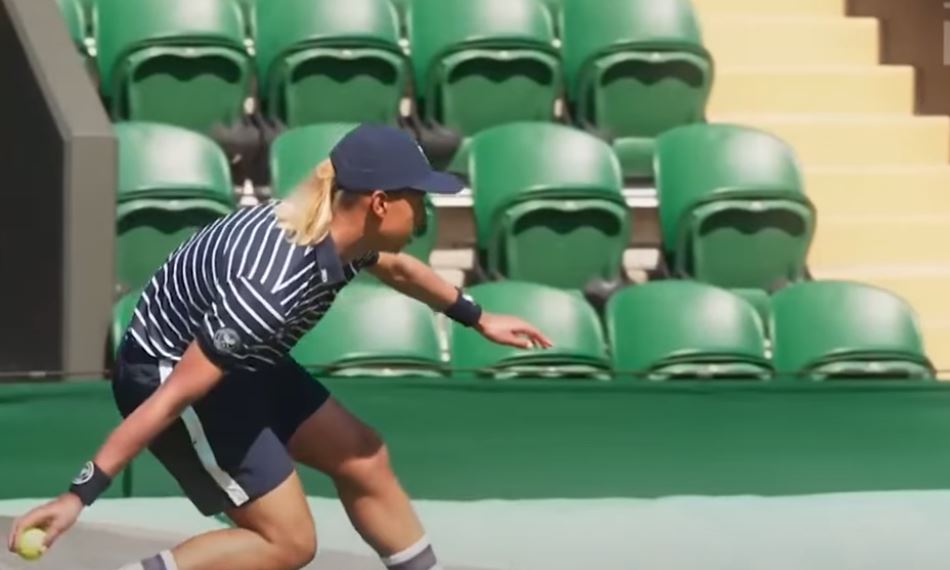
The public’s attention has recently been drawn to Wimbledon, not because of its famous strawberries and cream or Centre Court spectacles, but rather because of the remarkably low salaries of its youngest contributors. For their two-week commitment at the tournament, Ball Boys and Ball Girls, or BBGs as they are affectionately known, are paid a meager £200. Given the size and income of the event, this number may seem excessively low to some, but it is shrouded in tradition, history, and reverence.
Wimbledon’s partnership with over 30 partner schools in Surrey and London has resulted in a pool of well-behaved teenagers who train hard months before the competition. The goals of this training, which starts every February, are very clear: accuracy, dexterity, and concentration under duress. It’s about embodying the poise and elegance that win Wimbledon prizes, not just about chasing balls.
Wimbledon Ball Boy Salary | 2025 Facts
| Category | Information |
|---|---|
| Total BBGs (Ball Boys/Girls) | Approximately 250 |
| Age Range | Predominantly 14 to 17 years |
| Applicants per Year | Over 1,000 |
| Selection Rate | Around 25% |
| Total Pay | £200 per tournament (~$253 USD) |
| Taxation | Non-taxable (below income threshold) |
| Uniform | Official Ralph Lauren kit (shirt, skirt/shorts, socks, shoes) |
| Training Duration | February to June, weekly 2.5-hour sessions |
| Work Pattern | 1 hour on court, 1 hour off, in teams of six |
This initiative’s professionalism, diversity, and scope have all significantly improved over the last ten years. Each prospective BBG attends once-weekly, 2.5-hour training sessions at Raynes Park Community Sports Ground, where they learn movement patterns and protocols that are comparable to military drills in their field. Being chosen is a personal accomplishment for many of these teenagers—earned, not given.
By utilizing long-standing customs, Wimbledon has made sure that prestige frequently surpasses pay. Each BBG receives Ralph Lauren uniforms that were created especially for the competition. Long after the last match point has been scored, these kits, which are worth more than the stipend itself, are proudly worn as badges of honor.
The tournament offers a unique experience that combines young passion with top-tier professionalism thanks to strategic partnerships with participating schools. Adult participants have also been invited in recent years. Dennis Gibbons, a 47-year-old who served in 2019, is one notable example of how the role is becoming more inclusive while also defying traditional age norms.
However, concerns regarding equitable remuneration continue to be pertinent. The symbolic nature of the Wimbledon BBG salary generates relevant discussion in light of the growing participation of young people in elite sports. The role continues to have aspirational value because celebrities like Roger Federer were once ball boys themselves. However, many families’ aspirations do not cover the cost of transportation.
In order to minimize fatigue and guarantee optimal court coverage, BBGs are organized into six-person teams that rotate hourly throughout the tournament. Another level of recognition within the role is provided by the handpicked teams assigned to Centre Court or No. 1 Court for their outstanding training performance. There are rewards ingrained at every level of the hierarchical structure.
More than its content, Wimbledon’s stipend is notable for its symbolism in the larger framework of youth labor. Wimbledon’s strategy seems noticeably more modest in comparison to tournaments such as the US Open, where some ball crew members are said to make up to $1,000. Organizers, however, consistently refer to the amount as a token of gratitude rather than a salary.
Many BBGs are aware of this distinction. They frequently say that the experience changed their lives, not because of the money but rather because of the confidence it gave them. Wimbledon gives these teenagers skills that go well beyond tennis by encouraging discipline, teamwork, and quick decision-making. As evidence of the program’s wider influence, some even go on to work as coaches, event coordinators, or sports administrators.
Wimbledon has maintained a culture that is both traditional and modern by fusing aspects of tradition with progressive policies. The question remains, though: does the prestige of being a BBG outweigh the meager compensation?
Current tennis stars Novak Djokovic, Emma Raducanu, and Carlos Alcaraz have all commended BBGs for their professionalism and effectiveness. These endorsements provide validation, especially when they come from people who have achieved the highest levels of the sport. However, they also highlight the disparity in power: teenagers who support million-dollar matches, frequently without compensation other than token gestures.
Wimbledon creates an immersive BBG experience through cultural branding and strategic storytelling. Parents record everything. Outstanding performers are highlighted by the local media. Even the uniforms, which are meticulously tailored and incredibly durable, end up becoming family heirlooms. This well-written and convincing story frequently surpasses criticism.
Advocates for youth employment have recently discussed Wimbledon’s payment model in greater detail. Early-stage competitors may find it extremely expensive to attend training sessions and commute during tournament weeks, particularly if they come from lower-income families. Even though it is symbolic, the £200 stipend is not always sufficient to cover these expenses.
Thousands still apply every year. This ongoing interest implies that the BBG role’s worth cannot be expressed in monetary terms alone. It’s about being close to greatness for many. It’s about being five feet away and watching Serena Williams serve up an ace. Or listening to the quiet on Centre Court while Andy Murray gets ready for a point.
